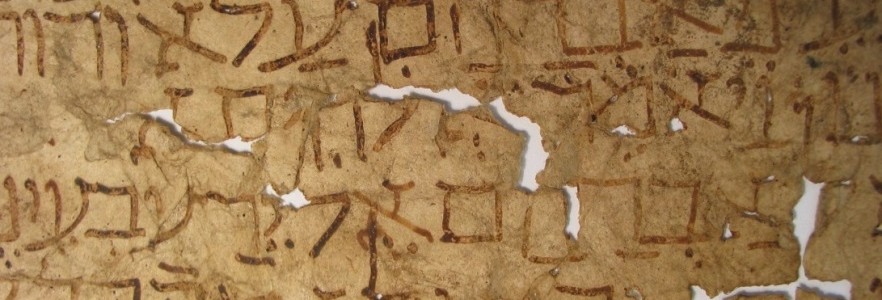
Conservation of the Lewis-Gibson Collection: re-treatment of manuscript fragments from the Cairo Genizah
by Mary French, Rebecca Goldie and Emma Nichols
Cambridge University Library (the UL) contains the largest collection of medieval Jewish writings in the world. Around 200,000 fragments from the Cairo Genizah are housed at the UL in three unique collections (the Taylor-Schechter, Jacques Mosseri and Lewis-Gibson Collections), and the UL has been home to the Taylor-Schechter Genizah Research Unit since the 1970s.
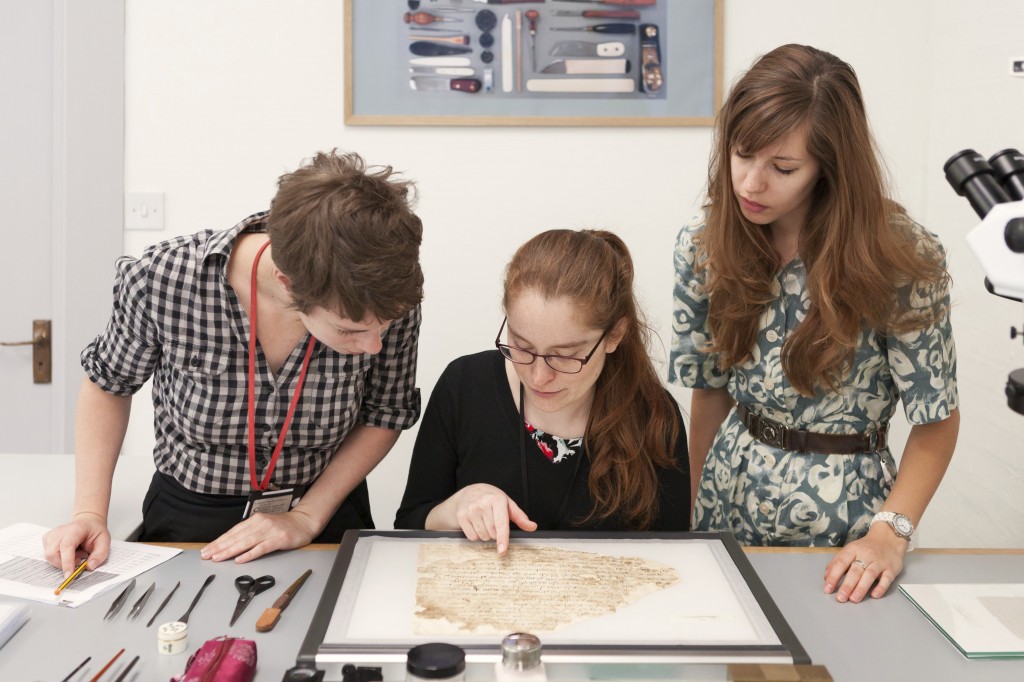
Figure 1: The Lewis-Gibson team discussing a fragment. From left to right, Rebecca Goldie, Mary French, and Emma Nichols
The Cairo Genizah
The Jews of Fustat, the medieval capital of Islamic Egypt, lived at the commercial and administrative hub of a vast empire that stretched from Spain to Iraq. Following rabbinic tradition, they treated their sacred writings with respect. Once damaged or obsolete, these texts would be deposited in a synagogue storeroom called a genizah prior to their eventual ritual burial.
Although such storerooms would usually be emptied regularly, the two-storey genizah at the Ben Ezra Synagogue in Fustat, known as the Cairo Genizah, was left largely untouched for nearly a millennium, and continued to accumulate defunct documents up until the mid-nineteenth century (Fig. 2). Alongside worn out prayer books and Bibles, the Jews of Fustat also stored the detritus of their daily lives, depositing letters, poetry, shopping lists, legal documents, and accounts; some of them autograph writings of great medieval Jewish thinkers, like Moses Maimonides. Together they provide an unparalleled window into the medieval Mediterranean world. The Cairo Genizah was recently described by historian Simon Schama as ‘the single most complete archive of a society anywhere in the whole medieval world’.
The History of the Lewis-Gibson Collection
The Cairo Genizah came to the attention of Cambridge scholars through the efforts of two intrepid Scottish sisters, Agnes Smith Lewis and Margaret Dunlop Gibson. An idiosyncratic upbringing and a timely and substantial inheritance enabled the sisters to indulge their interest in biblical scholarship by travelling to exotic climes. On one expedition to St Catherine’s Monastery in the Sinai in 1892, Agnes and Margaret discovered a palimpsest containing the earliest known copy of the Gospels in Syriac (an Aramaic dialect similar to the language of Jesus).
The sisters bought religious manuscripts from dealers and in antiquities bazaars on many of their travels, believing it their duty to preserve the fragments for study. After one such journey to Egypt, their friend Solomon Schechter, Cambridge’s Reader in Rabbinics, identified amongst their purchases a fragment of the book of Ben Sira (Ecclesiasticus) in Hebrew, its original language of composition (it had hitherto been known from a later Greek translation). This fortuitous discovery led Schechter to travel to Egypt to discover other similar fragments of this work, and in 1896 Schechter located and eventually acquired the remaining contents of the Cairo Genizah, bringing 193,000 fragments in tea chests to Cambridge University Library.
Agnes and Margaret gave the fragment of Ben Sira to the UL, but bequeathed the remainder of the 1,791 Genizah manuscripts in their private collection to the United Reformed Church’s Westminster College. As the collection was one of the earliest to be taken out of the Genizah, it includes a number of hand-picked treasures. The collection includes an autograph work by Moses Maimonides, the earliest known example of a Jewish engagement deed from 1119, an autographed poem by the medieval Spanish Hebrew poet Joseph ibn Abitur (Fig. 3a and 3b), a letter written by a woman fleeing the First Crusade and a rare, tenth-century parchment copy of Saadya Gaon’s translation of the Bible into Arabic, as well as magical spells and many other religious texts.
In August 2013, following a major public appeal, the Bodleian Libraries, University of Oxford, and Cambridge University Library jointly purchased what is now known as the Lewis-Gibson Genizah Collection, of which we are the project conservators. After conservation and digitisation of these fragments has been completed at Cambridge, the collection will be divided between the two libraries.
Approaching the Collection
Unlike the other Genizah collections held at the UL, which arrived loose in crates or boxes, the fragments of the Lewis-Gibson Collection had already been repaired in the late nineteenth century. The majority of the fragments were adhered to paper hinges and guarded into 15 large volumes (Fig. 4a and 4b). Another 48 were enclosed between glass, 13 of which were later removed due to cracks in the glass or fragment instability and were rehoused in Melinex.
As is the case for any large-scale manuscript collection, finding a conservation treatment that can be applied to every single fragment in the collection and to a deadline has been quite a challenge. We have 1,791 unique fragments, each with its own qualities and characteristics of decay and all of which merit individual attention.
A detailed conservation survey was carried out upon the collection’s arrival at the UL, which recorded the condition of every fragment and estimated the treatment and time required for each one prior to digitisation. Lying untouched in a Genizah for hundreds of years has left its mark on the fragments; the impact of fluctuating temperature and moisture levels within the Genizah are evident across the collection as stains, tears, losses, cockling, brittleness, gelatinisation of parchment, extensive insect and rodent damage and ink corrosion (Fig. 5).
Following on from the survey, our colleague Lucy Cheng, who has over four years’ experience working solely on Genizah material, designed a treatment plan and process specifically for the Lewis-Gibson Collection. The main objectives are to reveal and preserve the text, stabilise the fragments and provide better housing in order to reduce direct handling, extend the life of the collection and facilitate digitisation and access.
Ink stability
Sadly, some of the inks have already been severely damaged or lost. In order to incorporate the potential need for consolidation of friable inks into the treatment plan, the ink on every fragment was examined under magnification during the survey (Fig. 6).
Many of the inks in other Genizah collections held at the UL are extremely flaky or powdery, but the majority of the inks in the Lewis-Gibson Collection are fairly stable. It has been hypothesised that during repair in the late nineteenth century, the fragments were humidified and pressed flat, thus inadvertently consolidating the pigments on most of the fragments and leading to greater overall ink stability than might otherwise be expected.
Assessing the Impact of Historical Treatments
The Lewis-Gibson Collection has provided a chance to reflect on previous treatments applied to the other Genizah collections in the UL in the light of current conservation ethics, considering also the significance and impact of the historical repairs.
Nineteenth-century bindings
While the nineteenth-century decision to house the majority of the collection in guard books had at one time offered some protection to the fragments, this is no longer a suitable solution. The volumes are tightly bound, obscuring text and restricting movement. Turning the pages requires direct contact with the vulnerable fragments, risking further damage. The hinges offer little support to heavier fragments and the binding materials are non-archival. These problems affect the long-term survival of the fragments and make digitisation difficult, and so the decision was made to remove the fragments from their volumes.
Historical repairs
There are three main types of historical repairs that have been applied to the items in this collection: large strips of heavyweight paper, paper which has been applied and then abraded, and translucent paper (Fig. 7).

Figure 7: A fragment showing all three types of historical repairs. Clockwise from the top; heavyweight, abraded, and translucent paper repairs
Although these repairs may have been considered appropriate at the time, some of them obscured text, restricted natural movement of the fragments, and in some cases accelerated the degradation of the already fragile manuscripts. In addition, the hinge adhesive has caused cockling where the fragments were adhered along their fragile edges. The conservation process brought to light several ethical issues regarding the removal of these 19th-century repairs and has sparked an ongoing discussion about their significance as an integral part of the collection’s identity and as an historical resource. In some cases, removing these previous repairs can cause more harm than good and so repairs are left intact when possible to avoid introducing additional moisture to the fragments, as well as to preserve some remnants of the previous repair work and expedite the conservation process.
The Conservation Process
Documentation, Cleaning and Removal of Historical Repairs
Fragments are removed from the binding and photographed on both recto and verso to provide pre-conservation documentation. If the hinges contain any marginalia (Fig. 4b), they are removed and preserved in labelled polythene bags, as are any adhesive samples, thread, tape, or deposits found on the fragments.
Before conservation begins, the stability of the ink on each fragment is re-tested, after which the fragments are cleaned with soft brushes. Although much of the original dirt was presumably removed during historical treatment, what remains is often difficult to remove as dirt and debris has bonded closely with the surface of the fragment in a similar fashion to the inks. A methylcellulose poultice is applied directly to the hinges and historical repairs (Fig. 8). Since the previous repair papers respond at different rates, we carefully monitor the poultice to ensure that the fragment underneath does not become overly humidified.
Stabilising the Fragments
To prevent further loss, enable better readability, and to ensure the fragments lie flat for digitisation we unfurl and realign folds where possible. On paper fragments, a spatula and a damp brush are used to tease folds open. On parchment, we use a rigid agar gel as a poultice with a Bondina barrier; this allows us to carefully control the delivery of moisture to the fragment (Fig. 9).
New repairs are only applied to areas at risk of loss or further damage. Depending on the area that needs repair, we use either undiluted wheat starch paste or remoistenable 2.5 gsm Berlin tissue to stabilise tears and vulnerable areas. We pre-coat our tissue with a 50:50 mix of methylcellulose and wheat starch paste, which is reactivated with a damp brush. These materials were selected in order to minimise the visual impact of the repairs and limit the introduction of moisture.
Throughout the treatment process the fragments are dried and acclimatised between Bondina and blotter under light weights. Recently, we have started to use wool felt for pressing the parchment fragments. We sourced a manufacturer in Spain that makes unbleached, 18 gsm, 2 mm thick, pure wool felt. The felt is perfect as it offers soft support, following the unique contours of each piece of parchment, meaning we can gently coax it flatter over time. The number of felts can be adapted to provide varying layers of support. When removing hinges and repairs we use mini ‘sandwiches’ of silicone release paper and blotter or Bondina and felt under glass as we go along to enable us to work efficiently with minimal risk to the humidified areas (Fig. 10).
Short-Term Housing for Digitisation
After several days the fragments are encapsulated in Melinex and closed on four sides with an ultrasonic welder. This temporary solution means the fragments can be viewed clearly on both sides and handled safely during digitisation. Air holes are left around the edges to prevent a microclimate forming that may encourage biodeterioration of the fragment, or trap damaging compounds off-gassed by the fragments themselves. The fragments are stored in individual paper folders within archival boxes which are held in the UL’s environmentally-controlled stacks. We are currently investigating and developing solutions for long-term housing.
Scientific Analysis of the Collection
Scientific analysis of the fragments was conducted in collaboration with other professional institutions. This included collagen analysis through peptide mass fingerprinting, undertaken with BioArCh at the University of York, to identify parchment species (Fig.11).
In conjunction with West Dean College, pigment identification was carried out through X-Ray Fluorescence (XRF) (Fig.12) and adhesive analysis was performed using Fourier Transform Infrared Spectroscopy (FT-IR). These tests contributed to the conservation team’s understanding of the composition of the Genizah material and informed treatment decisions on the Lewis-Gibson project.
The results also aided the work of the manuscript researchers in the GRU, who were, for the first time, able to compare the results of the rigorous scientific analysis with the previously held assumptions derived from received codicological knowledge. This has added to the reliability of the manuscript descriptions produced by the GRU and opened up new avenues of investigation. Throughout the project, both the researchers and conservators have benefitted from a close working relationship, which has greatly assisted the process of conservation, while also in turn informing the research.
Looking Forward
The Lewis-Gibson project has given the conservation team many chances to reflect, re-evaluate, and adapt the techniques and materials used throughout the conservation process. This has been the third Cairo Genizah collection to be conserved at the UL, and as a result a sensitive, subtle and effective approach to treatments has been established which can be adapted and applied to similar large-scale manuscript collections.
The conservation is almost complete and digitisation is in progress. There will be an exhibition in autumn 2016. It is hoped that through this project, the fragments have retained the significance of their material culture and have been given the best possible chance at long term survival. The completion of digitisation will make the collection accessible to a worldwide audience.
All images copyright University of Cambridge and Bodleian Libraries, University of Oxford.
Acknowledgements – The Lewis-Gibson Collection was surveyed by Lucy Cheng, Rebecca De’Ath, Deborah Farndell, Mary French, Anna Johnson and Shaun Thompson. Thanks to Melonie Schmierer-Lee for providing background information about the collection.

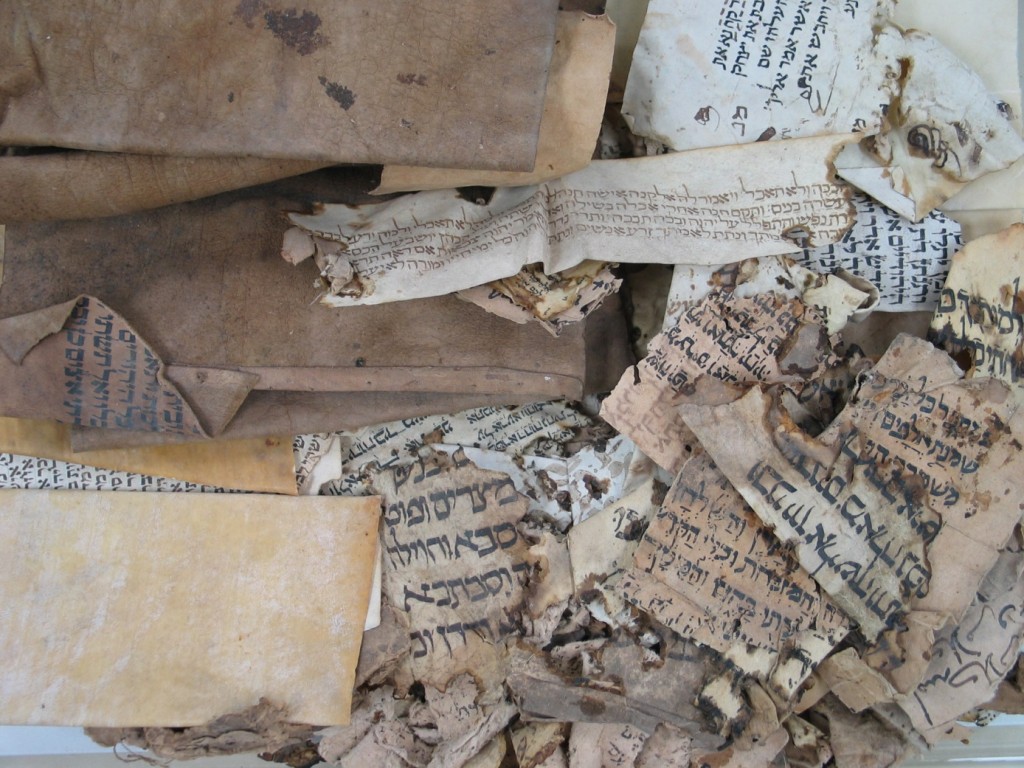
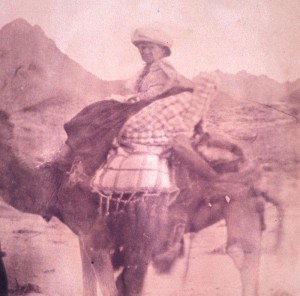
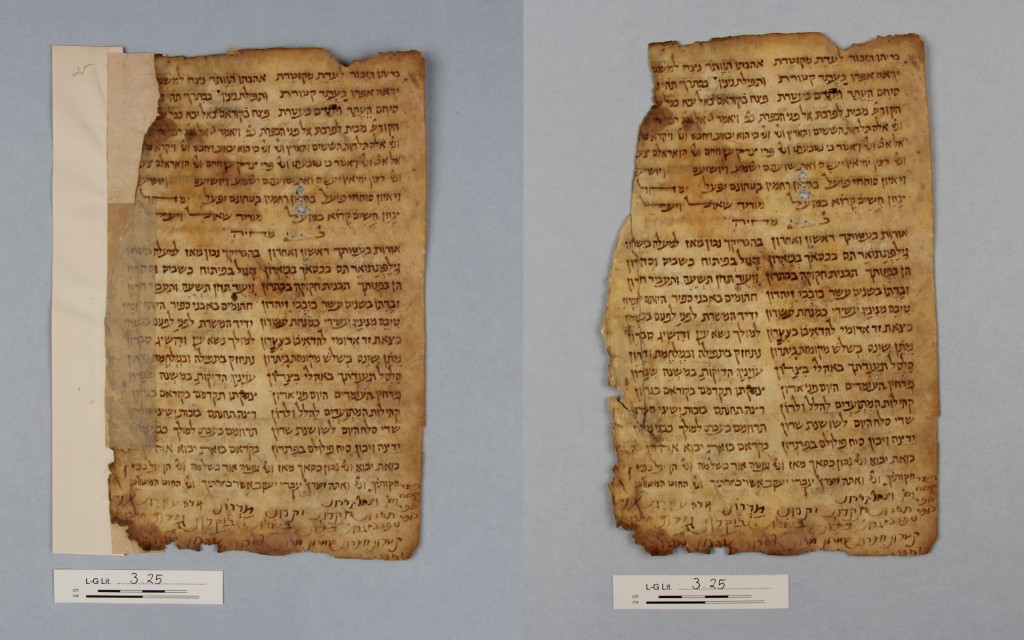
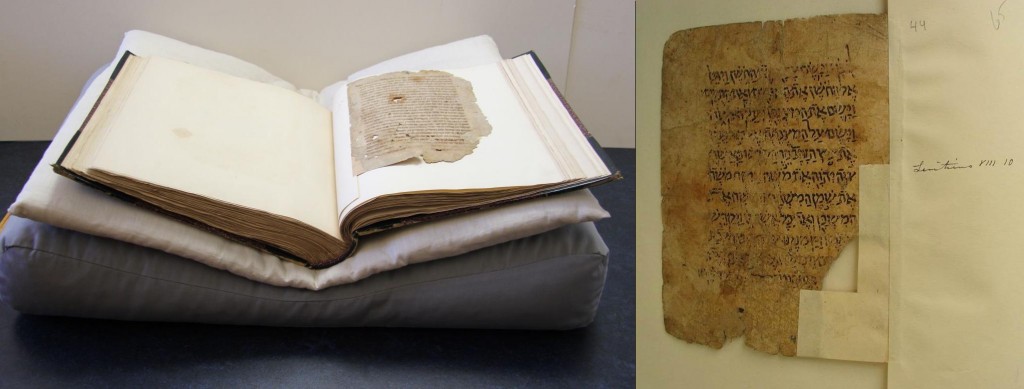
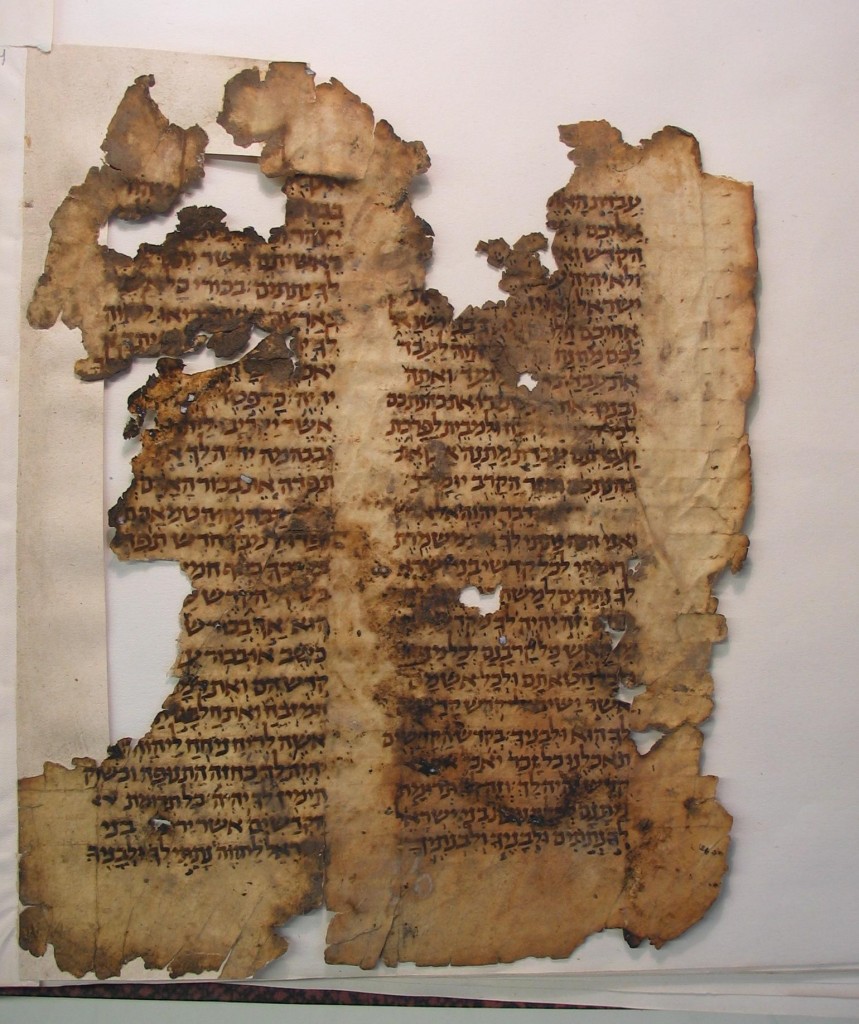
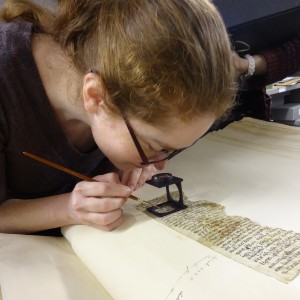
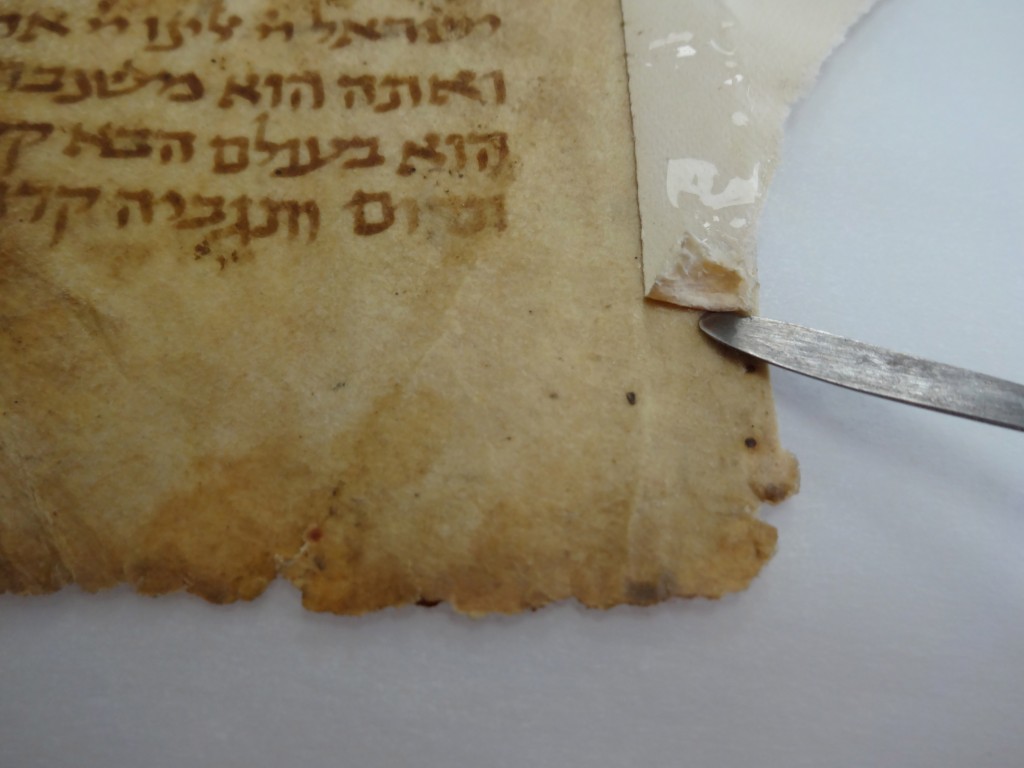

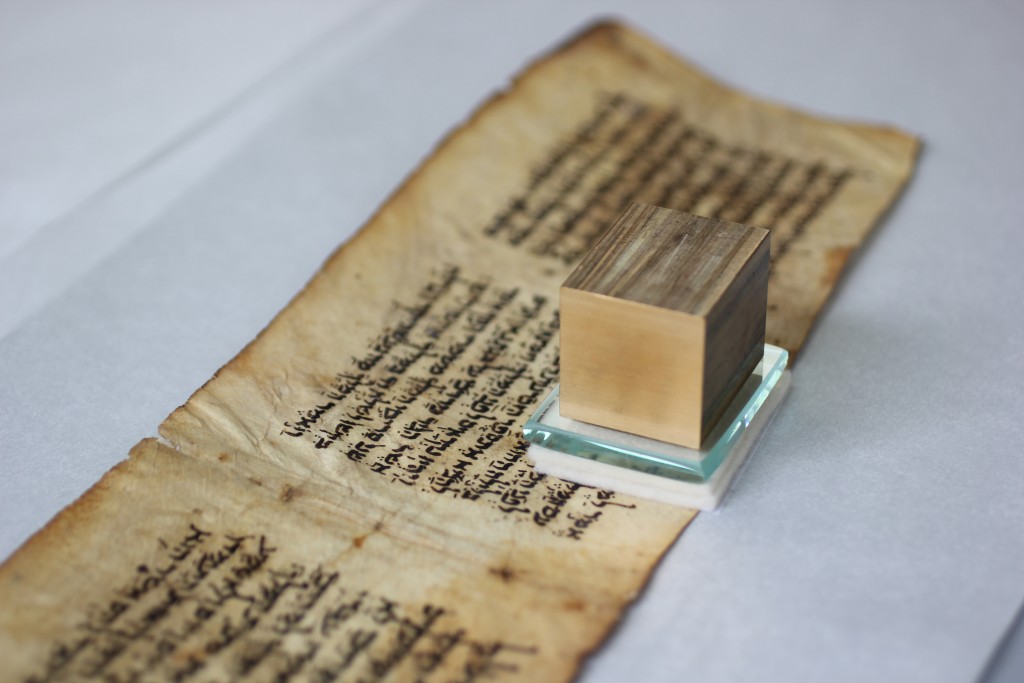
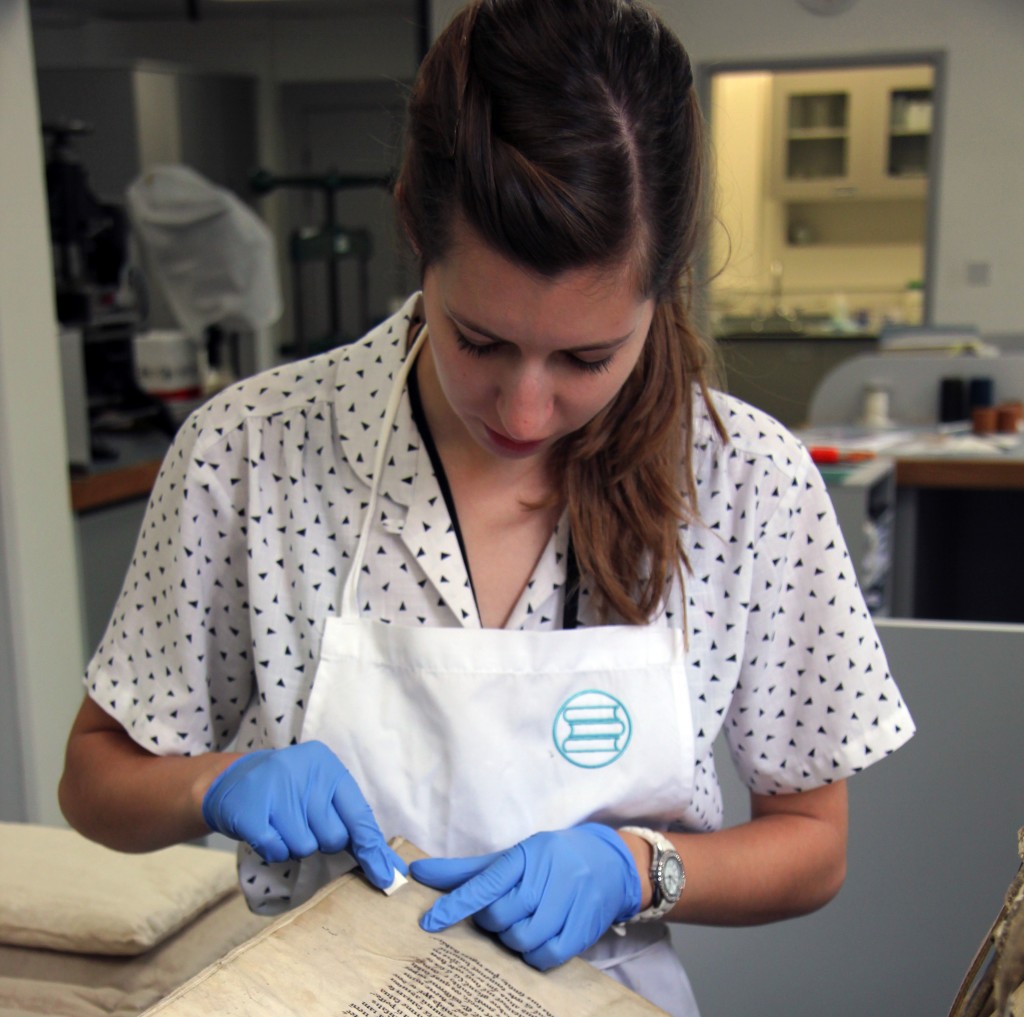
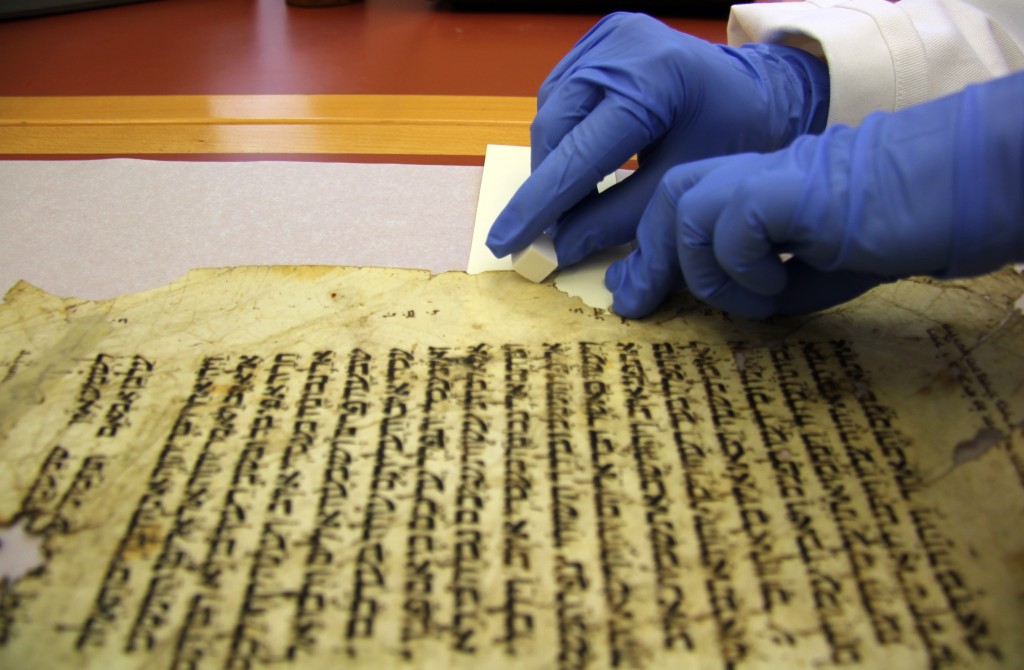
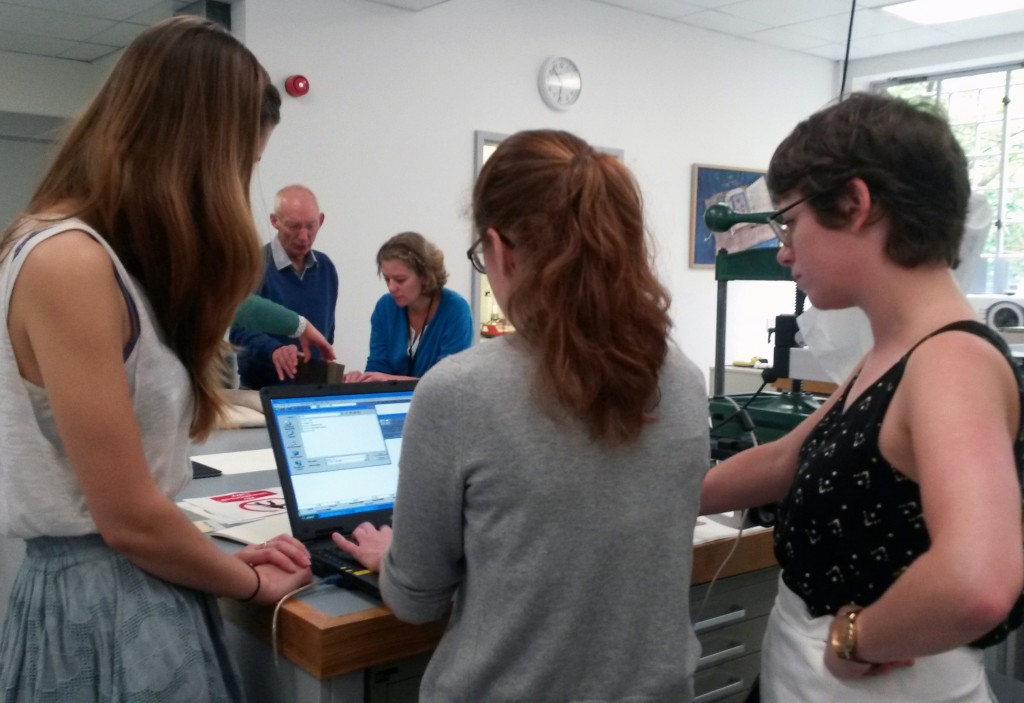
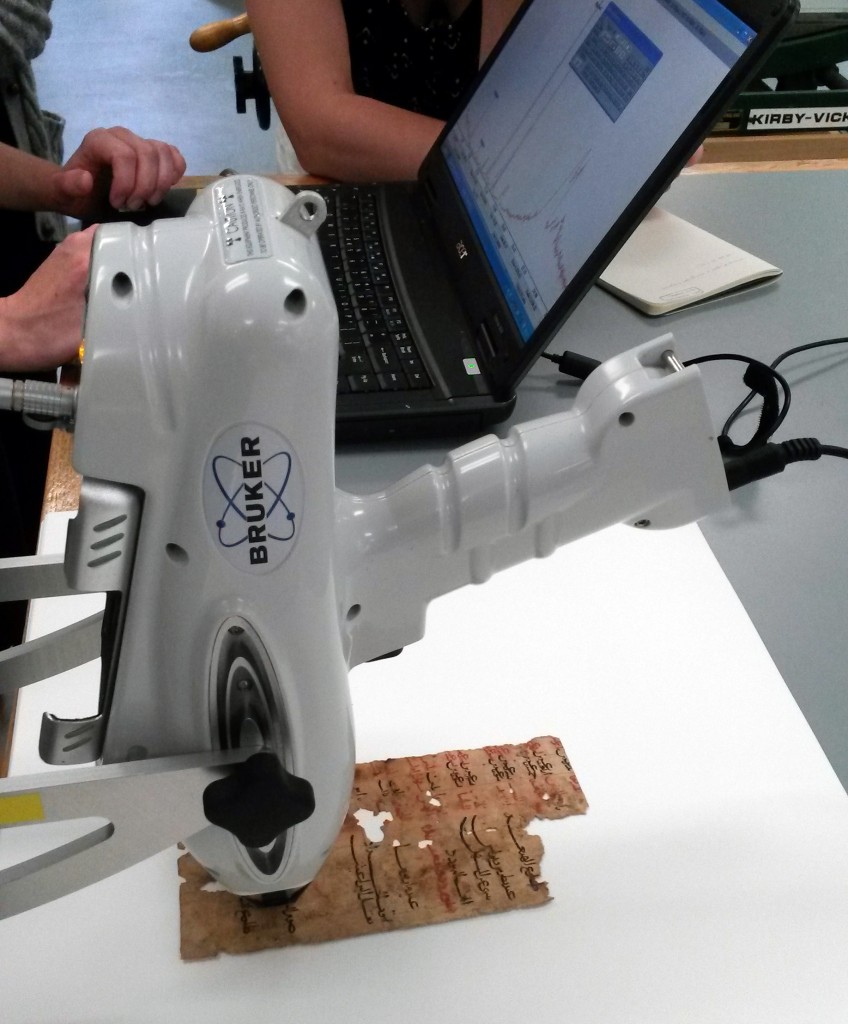
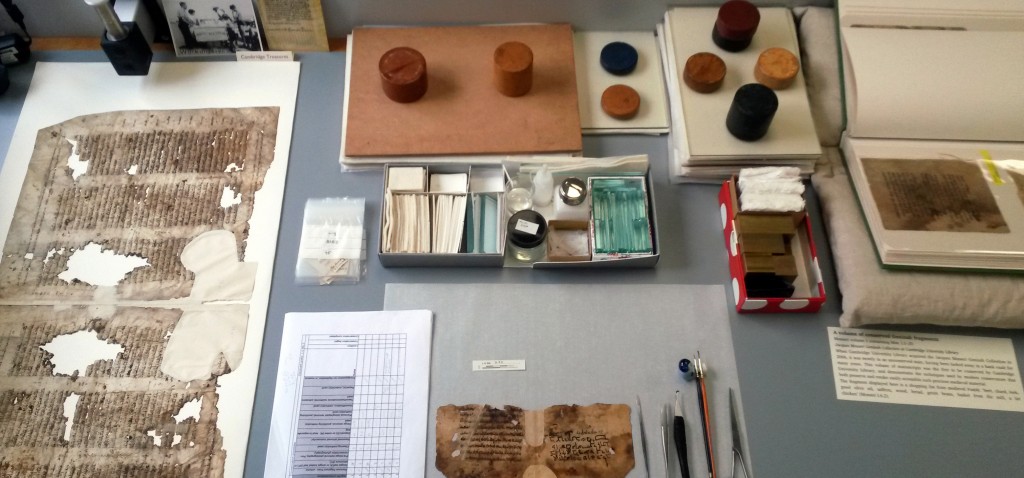
Pingback: Cambridge Digital Library – latest update | Cambridge University Library Special Collections
Good afternoon
I have a futur article about the sisters Agnes Smith Lewis and Margarte Dunlop Gibson , and i would like to find a photography of her during a travel in Sinai or in Syrie ?
Perhaps have you in your collection a photo. to propose me …
Thank you for your assistance . All the best.
Frédéric Mazuy / For an archaeology article about the Syriac Sinaiticus discovery / Le Monde de la Bible Nr. 217